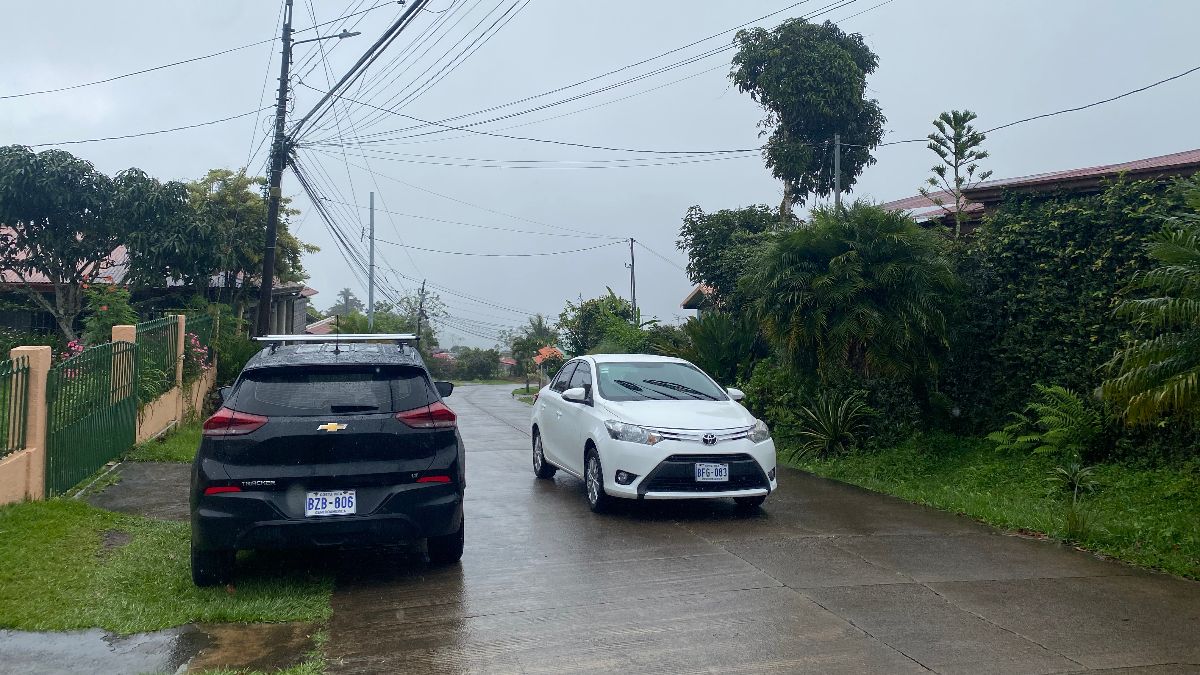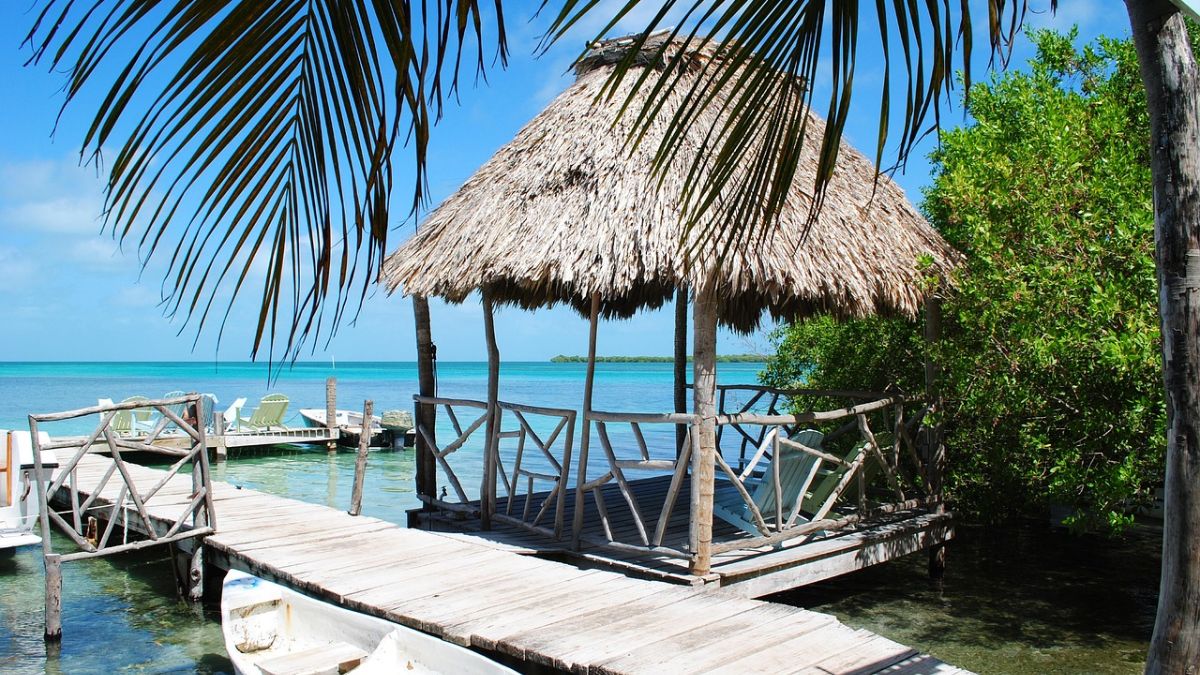Snorkeling is one of the easiest ways to experience Belize’s marine environment, and the country offers reliable access to shallow coral, clear water, and protected reserves. This guide highlights the best snorkeling in Belize and explains what to expect in each region.
Belize is one of the easiest places in Central America to slip on a mask and see reef life up close. Facing the Caribbean Sea, Belize sits behind the second-longest barrier reef on earth, which creates calm water and clear visibility, making snorkeling simple even for beginners. Most coral heads and seagrass beds lie in shallow water, and the protected reserves along the coast support turtles, rays, nurse sharks, and large schools of reef fish.
Tours run daily from most beach and island communities, and operators provide equipment, instruction, and ecological briefings. The reef is also heavily protected through national parks and marine reserves, so coral gardens and seagrass beds remain in good condition. These protections make snorkeling in Belize reliable and accessible for anyone who wants to experience Caribbean reef life without complicated logistics. With that in mind, here is a regional guide to the country’s best snorkeling areas.
Ambergris Caye and Caye Caulker: The Heart of Belize Snorkeling
Most visitors to Belize base themselves in Ambergris Caye or Caye Caulker, and the reef systems around these islands offers the most famous sites in the country. These locations appear in almost every traveler discussion because they offer consistent marine life, easy conditions, and short boat rides to the reef.
Hol Chan Marine Reserve
Hol Chan Marine Reserve is the most recognized snorkeling destination in Belize and remains the top recommendation across guidebooks, marine biologists, and local tour operators. Its name refers to a natural channel in the reef where coral, seagrass beds, and mangroves meet to create a dense concentration of marine life. Snorkelers regularly see southern stingrays, nurse sharks, angelfish, parrotfish, barracuda, grunts, and snappers. Sea turtles are common, especially green and hawksbill turtles that graze in the seagrass.
Hol Chan works well for beginners because most of the coral gardens sit in shallow water. The clarity is usually excellent, and the channel structure funnels fish and rays through predictable routes. Guides know where to look for specific species and often point out moray eels, small groupers, and the occasional spotted eagle ray. It is also one of the best places in Belize for turtle sightings. Hol Chan gets busy at peak times, but early morning departures help avoid crowds and offer calmer conditions.
View this post on Instagram
Shark Ray Alley
Shark Ray Alley sits within the Hol Chan Reserve and offers one of the most memorable wildlife encounters in Central America. The shallow sandy bottom attracts dozens of nurse sharks and large southern stingrays that glide through the water in full view of snorkelers. These animals gather here because the area was once used by fishers who cleaned their catch nearby. Today, the site is protected and managed through regulated eco-friendly tours.
The sharks are used to snorkelers and swim calmly through the area. The visibility is excellent because the sandy bottom reflects light into the water column. While Shark Ray Alley can look intimidating in photos, the experience is considered safe and suitable for most visitors. Many tours combine Hol Chan and Shark Ray Alley in a single trip, which makes this part of the reef one of the most efficient places to see large marine animals in Belize.
Mexico Rocks
North of San Pedro, Mexico Rocks is a patch reef system known for its shallow coral heads and calm water. Many travelers and guides list it as a favorite because the coral here is broad, colorful, and easy to explore without currents. The site features large brain corals, staghorn formations, and elkhorn coral gardens that attract butterflyfish, trunkfish, damselfish, and small angelfish. Lobsters and conch hide beneath the reef structures, and juvenile barracuda patrol the edges.
Mexico Rocks suits beginners, children, and anyone who prefers slow, quiet snorkeling rather than channel swimming. The visibility is strong throughout most of the year, and the protected setting makes the reef feel like a large, natural aquarium. Many guides recommend it as an alternative to Hol Chan for visitors who want less boat traffic and a more relaxed setting.
Coral Gardens
Coral Gardens sits near Caye Caulker and offers bright coral colonies in shallow water. Angelfish, parrotfish, wrasses, and grunts feed openly in the gardens, and small rays glide along the sandy patches between coral heads. The reef here is healthy, with a good mix of hard and soft coral that support a wide range of species. Many Caye Caulker operators treat Coral Gardens as a core stop on their tours, often pairing it with Shark Ray Alley or Hol Chan. It is a solid choice for visitors based on Caye Caulker who want quality snorkeling without long travel times.
Caye Caulker Marine Reserve and The Split
The Caye Caulker Marine Reserve includes coral gardens, seagrass meadows, and shallow channels that host turtles, rays, snappers, grunts, and angelfish. The island itself has a laid-back atmosphere that appeals to slow-paced travelers. On calm days, visitors can snorkel at The Split, a channel between the island’s two halves, where parrotfish, small rays, and juvenile fish feed in the tidal flow. While shore snorkeling is limited, the island serves as an excellent base for boat trips to the outer reef. Seagrass beds near Caye Caulker also have occasional manatee sightings in the right season.
Bacalar Chico Marine Reserve
At the northern tip of Ambergris Caye, Bacalar Chico is one of the least visited marine reserves in the region. The area sits within a protected zone that includes turtle nesting beaches, mangrove forests, and remote coral ridges. Snorkelers often see large schools of grunts, snappers, angelfish, and parrotfish. Nurse sharks, stingrays, and the occasional turtle also appear along the drop-offs. The setting feels more remote than Hol Chan or Mexico Rocks because boat traffic is minimal. This makes Bacalar Chico ideal for travelers looking for quieter sites with strong biodiversity.
The Atolls: Belize’s Most Remote Snorkeling
Belize has three atolls outside the main barrier reef. These circular reef systems sit in deeper water and offer exceptional visibility and intact coral. They are more expensive to reach but are often considered the most rewarding snorkeling areas in the country.
Glover’s Reef Atoll
Glover’s Reef is part of the Belize Barrier Reef UNESCO World Heritage Site and one of the best preserved atolls in the Caribbean. The lagoon contains hundreds of patch reefs, each with coral slopes, sandy ledges, and schools of colorful reef fish. Snorkelers see angelfish, butterflyfish, queen triggerfish, wrasses, and eagle rays. Turtles are common, and nurse sharks cruise along the outer walls.
Because Glover’s Reef sees fewer boats than the cayes near Ambergris or Placencia, the coral is in excellent condition and visibility is very strong. The atoll often attracts travelers who want longer trips, eco-lodges, or multi-day marine experiences. It works particularly well for experienced snorkelers who want quiet conditions and diverse fish life.
View this post on Instagram
Turneffe Atoll
Turneffe Atoll is the largest atoll in Belize and supports a mix of shallow coral reefs, mangroves, and seagrass beds. It is well known for sightings of Caribbean reef sharks, nurse sharks, eagle rays, turtles, and large schools of snappers and grunts. The variety of habitats means visitors can explore coral heads, shallow flats, and deeper channels in a single trip. Many juvenile species live in the seagrass beds, creating nursery environments that support the outer reef.
Turneffe has several marine lodges and day tours that depart from Belize City, Caye Caulker, and Ambergris Caye. Because the area covers a wide range of ecological zones, it is an excellent choice for travelers who want to understand how Belize’s reef system fits together.
Lighthouse Reef Atoll
Lighthouse Reef Atoll is famous for the Blue Hole, but the best snorkeling here takes place at sites like Half Moon Caye and The Aquarium. These areas offer shallow coral gardens, sandy flats, and clear channels where schools of parrotfish, angelfish, wrasses, and butterflyfish feed openly. Turtles and rays glide along the edges, and reef sharks appear occasionally near deeper slopes.
Half Moon Caye has shallow areas that suit beginners, as well as coral ridges that appeal to experienced snorkelers. The site is quiet compared with the main reef because access requires a longer boat ride. Lighthouse Reef is ideal for visitors who want remote conditions and high visibility without crowds.
Central and Southern Belize: Placencia, Dangriga, and the Middle Reef
Southern Belize offers excellent snorkeling through a network of small cayes and marine reserves that sit close to towns like Placencia and Dangriga. These sites work well for visitors who want easy day trips and quieter locations.
South Water Caye Marine Reserve
South Water Caye Marine Reserve is the largest marine reserve in Belize and supports impressive coral diversity. The shallow gardens attract angelfish, parrotfish, small groupers, trunkfish, and butterflyfish. Turtles, eagle rays, and larger fish appear in the deeper channels. Tobacco Caye and Carrie Bow Caye offer shore access to reef flats, while boat tours explore coral ridges farther offshore.
The area includes research stations that monitor reef health, making it one of the most scientifically active zones in Belize. Visitors who stay on the cayes enjoy short swims to coral patches and strong visibility in most weather conditions. This makes South Water Caye a great choice for travelers who want variety without long travel times.
View this post on Instagram
Laughing Bird Caye National Park
Laughing Bird Caye is a small island off Placencia with calm, shallow water and gentle coral slopes. Families and beginners like this site because the reef is easy to explore and the fish are abundant. Trumpetfish, butterflyfish, damselfish, and wrasses swim openly in the coral gardens, and rays glide through the sandy flats. Rangers manage the area to protect nesting birds and marine life, and most tours include time on the beach. Laughing Bird Caye is one of the simplest and most accessible snorkeling options in the south.
Silk Cayes and Gladden Spit
Silk Cayes and the nearby Gladden Spit area are strong southern options for snorkelers seeking vibrant coral and wildlife. The shallow reefs host schools of snappers, grunts, groupers, parrotfish, and wrasses. Sea turtles are common in the area, and rays move across the sandy patches between coral heads. Guides often highlight the site for its calm conditions and bright coral structures.
Gladden Spit is also known for whale sharks during the spring fish-spawning season. Sightings are not guaranteed, but the possibility adds to the appeal for visitors who want larger marine encounters. The small sandy cayes and bright water create a scenic setting that works well for day trips from Placencia.
Rendezvous Caye
Rendezvous Caye is a small island with shallow gardens and easy access to coral. It is close to Belize City and sits within a core zone of the barrier reef. The clear water supports sea fans, sponges, and small coral heads that attract schooling fish. Because the island is small and tightly managed, the site works well for short visits and half-day trips.
Goff’s Caye
Goff’s Caye is another popular option near Belize City. The island sits directly on the reef, and snorkelers can enter the water near the beach. The coral slopes are accessible and home to angelfish, parrotfish, juvenile turtles, and stingrays. The shallow structure makes this site good for beginners, yet deeper channels offer something more interesting for confident snorkelers. Tour limits reduce crowding and help protect the reef, giving the island a calm atmosphere even on busy days.
Practical Tips for Snorkeling in Belize
Snorkeling works well year-round, but the clearest visibility usually occurs during the dry season between November and May. Water conditions vary with the weather and tides, so guides choose sites that suit the day’s conditions. Tours often provide equipment, but many experienced snorkelers prefer to bring their own mask to ensure comfort and fit. Most visitors rent their fins and snorkel on site, although some bring full gear for extended stays.
Guided tours are recommended because they help visitors understand the reef layout, currents, and marine species. They also offer better chances of spotting wildlife because guides know where turtles, rays, and sharks tend to gather. Early departures help avoid crowds at Hol Chan or Shark Ray Alley. Southern sites such as the Silk Cayes or Laughing Bird Caye tend to be less busy and suit visitors seeking quieter conditions.
Reef protection laws prohibit touching coral, standing on the reef, or collecting shells. These rules are important because many coral species grow slowly and are vulnerable to damage. Staying off the reef and following guide instructions helps preserve Belize’s marine environment for future travelers.
Final Thoughts
Belize’s coastline and offshore cayes make snorkeling straightforward for visitors who want easy access to healthy coral and a good chance of seeing marine life in natural settings. Conditions are predictable, tours are widely available, and the reef’s protected status keeps most sites in solid shape. Whether you choose the northern cayes, the atolls, or the quieter southern reserves, the experience is consistent across the country. Snorkeling in Belize works well for travelers of all experience levels and remains one of the simplest ways to understand the country’s connection to the sea.




